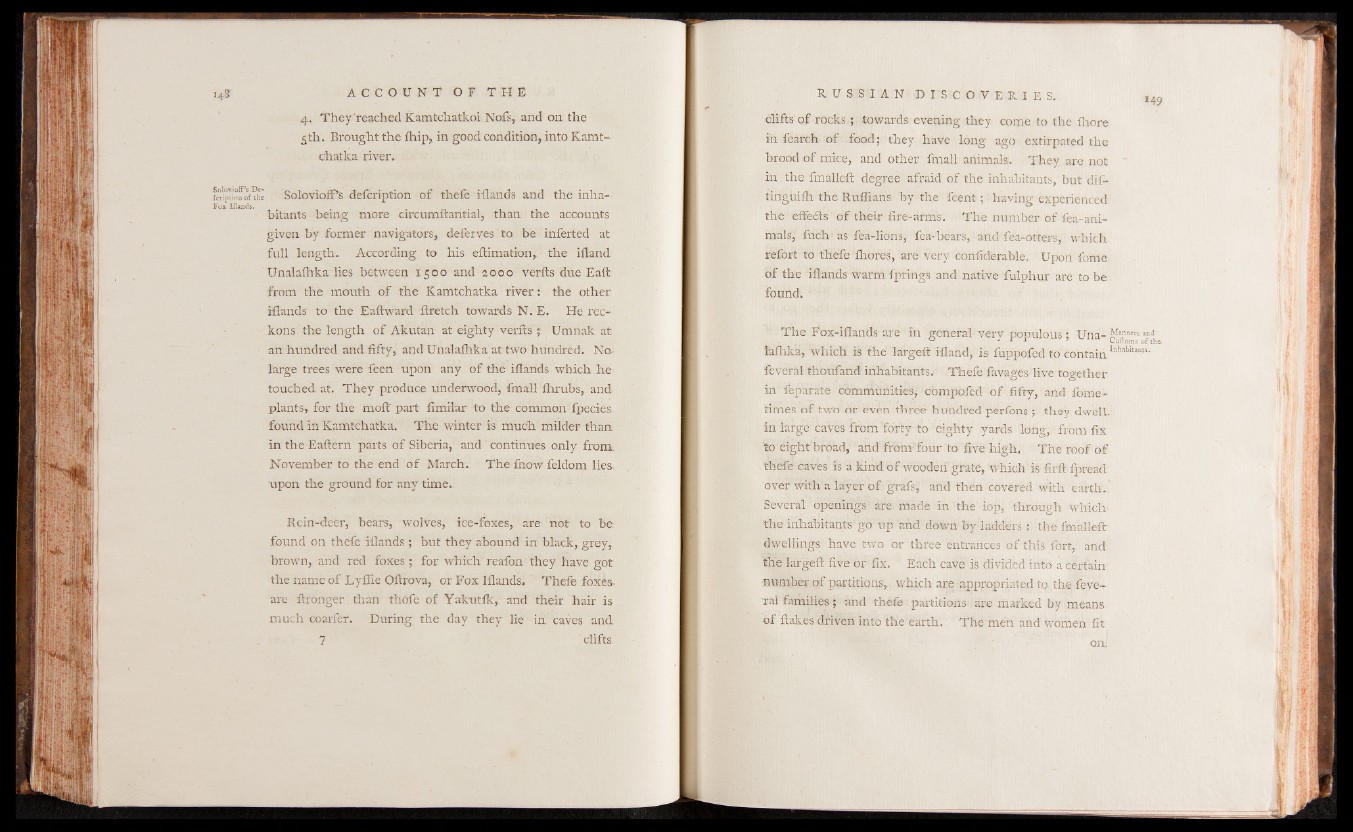
4. They'reached Kamtchatkoi Nofs, and on the
5th. Brought the Ihip, in good condition, into Kamt-
chatka riverftriplionofdw
Solovioff’s defcription of thefe iilands and the inha--
Fox Iilands. " . . . bitants being more circumltantial, than the accounts
given by former navigators, deferves to be inferted at
full length. According to his eftimation, the ifland
Unalalhka lies between 1500 and 2000 verfts due Eaft
from the mouth of the Kamtchatka river: the other
iilands to the Eaftward ftretch towards N. E. He reckons
the length of Akutan at eighty verfts ; Umnak at
an hundred and fifty, and Unalalhka at two hundred. No-
large trees were feen upon any of thé iilands which he
touched, at. They produce underwood, fmall Ihrubs, and
plants, for the moft part fimilar to the common fpecies
found in Kamtchatka. The winter is much milder than
in the Eaftern parts of Siberia, and 5 continues only from.
November to the end of March. The fnow feldom lies
upon the ground for any time-
Rein-deer, bears, wolves, ice-foxes, are not to bo
found on thefe iilands ; but they abound in black, grey,
brown, and red foxes ; for which reafon they have got
the name of Lyflie Oftrova, or Fox Iilands. Thefe foxes-
are ftronger than thófe of Yakutlk, and their hair is
much coarfer. During the day they lie in caves and
7 elifts
elifts of rocks; towards evening they come to the Ihore
in fearch of food; they have long ago extirpated the
brood of mice, and other fmall animals. They are not
in the fmalleft degree afraid of the inhabitants, but dif-
tinguiffi the Ruffians by the feenti; having experienced
the effects' of their fire-arms. The number of fea-ani-
mals, fuch as fea-lions, fea-bears, and fea-otters, which
refort to thefe fhores, are very confiderable. Upon feme
of the iilands warm fprings and native fulphur are to be
found.
The Fox-iflands are in general verv populous; Una- ®Ianncrs »”<■ J * x 7 Cultoms o f the
laffika, which is the largeft ifland, is fuppofed to contain Inhabi“mts'
feveral thoufand inhabitants. Thefe favages live together
in feparate communities'^ cbmpofed of fifty, and fome-
times of two or even three hundred perfons; they dwell,
in large caves from forty to eighty yards long, from fix
to eight broad, and from four to five high. The roof of
thefe caves is a kind of wooden grate, which is firft fpread
over with a layer of grafs, and then covered with earth.,
Several openings are made in the iop, through which
the inhabitants go up and down by ladders : the fmalleft:
dwellings have two or three entrances of this fort, and
the largeft five or fix. Each cave is divided into a certain
number of partitions, which are appropriated to the feve-
Tal families ; and thefe partitions are marked by means
of flakes driven into the earth. The men and Women fit
on;